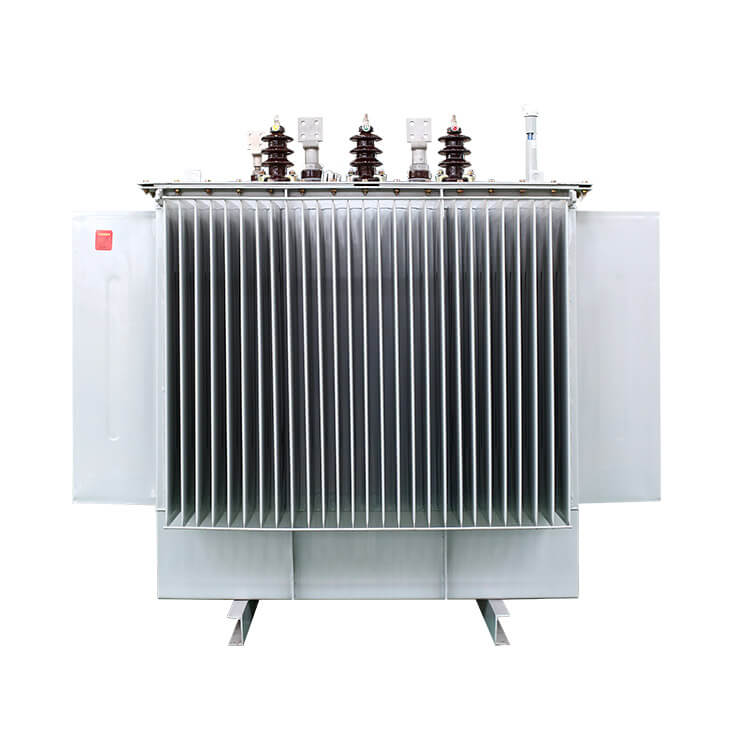1. How does a transformer work?
what is a transformer
A transformer is an electrical device that transfers electrical energy between two or more circuits through electromagnetic induction. It consists of two coils of wire, known as the primary and secondary windings, which are linked by a common magnetic core. The primary winding is connected to an input voltage source, while the secondary winding is connected to an output load.
Transformers are based on a very simple electrical fact: When a fluctuating current flows through a wire, it creates a magnetic field (an invisible pattern of magnetism) or "magnetic flux" around it. The strength of magnetism (its technical name is magnetic flux density) is directly related to the magnitude of the current. So the greater the current, the stronger the magnetic field.
Now here is another interesting fact about electricity. When a magnetic field fluctuates around a wire, it creates an electric current in the wire. So if we place a second coil next to the first coil and send a fluctuating current to the first coil, we will create a current in the second coil. The current in the first coil is often called the primary current, and the current in the second coil is (surprise, surprise) the secondary current. What we are doing here is passing current from one coil to the other across the empty space. This is called electromagnetic induction because the current in the first coil causes (or "induced") the current in the second coil. We can make electrical energy transfer from one coil to another more efficiently by wrapping the coil around a soft iron rod (sometimes called an iron core):
To make a coil, we simply roll the wire into a loop or (physicists like to call it a "turn"). If the second coil has the same number of turns as the first coil, the current in the second coil will actually be the same magnitude as the current in the first coil. But (and here's the clever part) if we have more or fewer turns in the second coil, we can make the secondary current and voltage larger or smaller than the primary current and voltage.
One important thing to note is that this trick only works if the current fluctuates in a certain way. In other words, you have to use a constantly reversing form of electricity with a transformer called alternating current (AC). Transformers are not suitable for direct current (DC), where a steady current flows continuously in the same direction.
2. Comparison and difference between step-down transformer and step-up transformer
what is a step-up transformer
A step-up transformer, also known as a voltage transformer or boosting transformer, is a type of transformer designed to increase the voltage of the input electrical system to a higher voltage level at the output. It achieves this voltage increase by having a greater number of turns in the secondary coil compared to the primary coil. The primary purpose of a step-up transformer is to facilitate the efficient long-distance transmission of electrical power.
step-down transformer
If the first coil has more turns than the second coil, the secondary voltage is less than the primary voltage:
This is called a step-down transformer. If the second coil has half the number of turns of the first coil, the secondary voltage will be half the primary voltage; if the second coil has one-tenth the number of turns, the voltage will also be one-tenth. Generally speaking:
Secondary voltage ÷ Primary voltage = Secondary turns ÷ Primary turns
In a step-down transformer, the current is converted in the opposite way (increase in size):
Secondary current ÷ Primary current = Number of primary turns ÷ Number of secondary turns
Therefore, a step-down transformer with 100 coils on the primary side and 10 coils on the secondary side will reduce the voltage by a factor of 10, but at the same time increase the current by a factor of 10. Power in a current is equal to current times voltage (watts = volts x amps is one way to remember this), so you can see that the power in the secondary coil is theoretically the same as the power in the primary coil. (Actually, there is some power loss between the primary and secondary because some "magnetic flux" leaks from the core, some energy is lost because the core heats up, etc.)
what is a step-down transformer
A step-down transformer is a type of transformer designed to decrease the voltage of the input electrical system to a lower voltage level at the output. It achieves this voltage reduction by having a smaller number of turns in the secondary coil compared to the primary coil. The primary purpose of a step-down transformer is to adapt electrical power to levels suitable for various applications, including residential, commercial, and industrial use.
Step-up transformer
To reverse this situation, we can make a step-up transformer to step up the low voltage to high voltage:
This time, the secondary coil has more turns than the primary coil. This is still true:
Secondary voltage ÷ Primary voltage = Secondary turns ÷ Primary turns and secondary current ÷ Primary current = Primary turns ÷ Secondary turns
In a step-up transformer, we use more turns in the secondary than the primary to get greater secondary voltage and less secondary current.
Thinking about a step-down transformer and a step-up transformer, you can see that the general rule is that the coil with the most turns has the highest voltage, and the coil with the fewest turns has the highest current.






